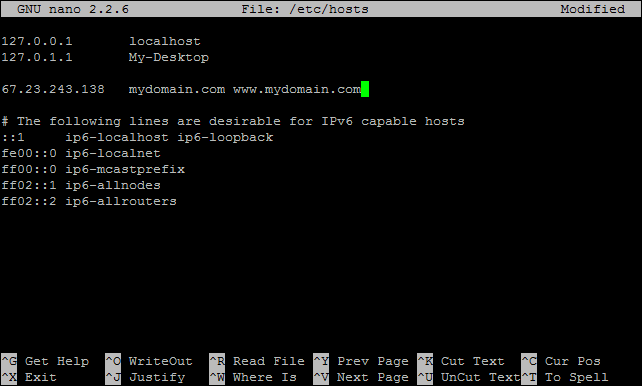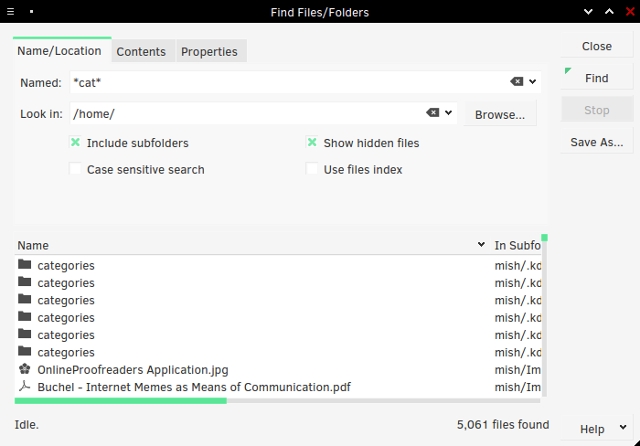
Signature Algorithm: sha256WithRSAEncryption You will see output similar to the following. Openssl x509 -in (path to certificate and certificate filename) -text -noout To example the details of a particular certificate, run the following command: The openssl command is a veritable Swiss Army knife of functions you can use to administer your certificates. crt extensions and will likely be named ‘(hostname).pem’ ‘(hostname).crt’, but sometimes the generic “server” file name is used as well. SEE: 5 Linux server distributions you should be using (TechRepublic Premium)Ĭertificate files in Linux are generally in the /etc/pki/tls/certs folder or possibly within an application-specific folder such as /etc/httpd for Apache (depending on the whim of the person or vendor who configured/built the application).
Find file on linux host password#
New Malware Targets 97 Browser Variants, 76 Crypto Wallets & 19 Password Managers How Generative AI is a Game Changer for Cloud Security
Find file on linux host software#
Must-read security coverageĨ Best Penetration Testing Tools and Software for 2023Ħ Best Cybersecurity Certifications of 2023 Therefore, it’s important to not only keep an eye on upcoming SSL certificate expirations (network scans or at the very least a log keeping track of these certificates are essential) but to completely verify the success of renewing/replacing these certificates. Expiring SSL certificates can be devastating for technological operations, with the impact ranging from worrisome browser error messages to complete production outages.

For more info, visit our Terms of Use page.Īdministering SSL certificates can be quite a chore, especially when it comes time to renew or replace them. This may influence how and where their products appear on our site, but vendors cannot pay to influence the content of our reviews. We may be compensated by vendors who appear on this page through methods such as affiliate links or sponsored partnerships. Learn tips on how you can use the Linux openssl command to find critical certificate details. SSL certificates are an integral component in securing data and connectivity to other systems. The webSocketsEnabled ARM setting does not apply to Linux apps since Web Sockets are always enabled for Linux.How to utilize openssl in Linux to check SSL certificate details Return 'Hello from Azure App Service team! I have been seen times.\n'.format(count)Īpp.run(host="0.0.0.0", port=80, debug=True) import timeĬache = redis.Redis(host='redis', port=6379)Įxcept as exc:
Find file on linux host code#
The example code below shows a Python app checking to see if a Redis container is running. Just as the control startup and shutdown recommendation from Docker, App Service Multi-container apps should check dependencies through application code - both at startup and disconnection. The depends_on option is unsupported on App Service and it'll be ignored. My custom container takes a long time to start, and the platform restarts the container before it finishes starting up. If not possible, you have to split the App Service plan because the host disk space is fixed and shared between all containers in the App Service Plan. We recommend that you keep your container images as small as possible and write data to the persistent storage or BYOS when running on Linux App Service. If the container writes a large quantity of data outside of the /home directory or Bring Your Own Storage (BYOS), it will result in startup failures or runtime exceptions once the host disk space limit is exceeded. The platform routinely cleans the host disk space to remove unused containers. If the container's writable layer saves data outside of the /home directory or a mounted azure storage path, the host disk space will also be consumed.

You might be able to use larger than 15 GBs depending on the exact availability of host disk space, but this isn't guaranteed. It's used to store any custom images on the worker.

It's not expandable and there is a 15 GB limit for each instance. The host disk space is separate from the file system storage quota. It's managed by the platform through the docker storage driver.



 0 kommentar(er)
0 kommentar(er)
